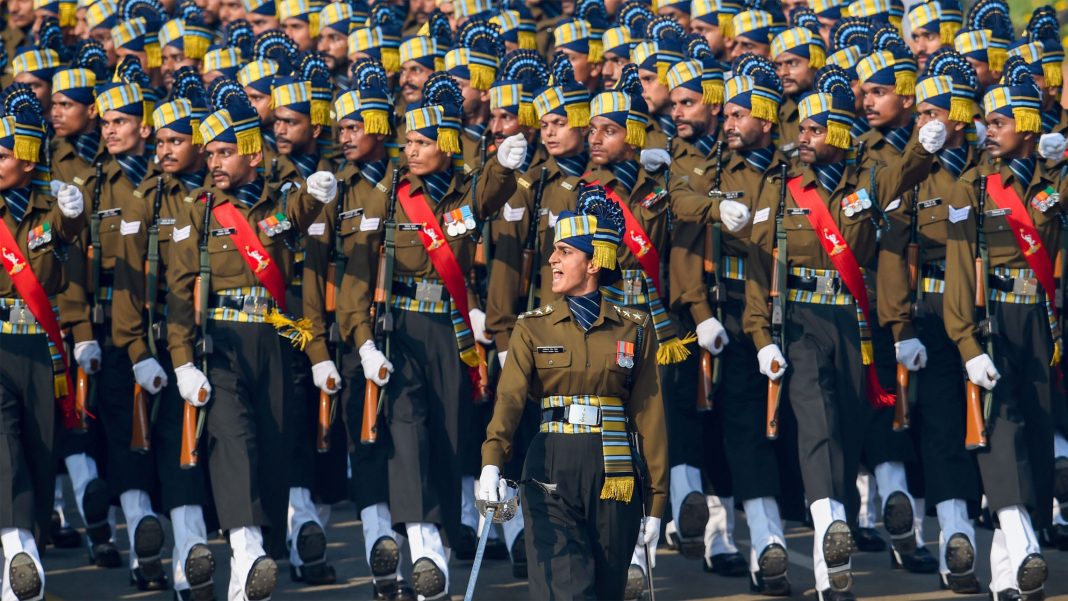Dipak Kurmi
The appointment of women officers to commanding positions in the armed forces, following a landmark Supreme Court directive, represents a significant milestone in India’s march toward gender equality. However, the transition has not been without its challenges. A recent letter by Lt Gen Rajeev Puri, General Officer Commanding, 17 Corps, has ignited a spirited debate within defence circles. Highlighting functional issues observed in units commanded by women officers, the letter has raised critical questions about readiness, training, and the broader integration of women into the command structure of the Indian Army. This discourse underscores the complexities of achieving true gender parity in an institution historically dominated by men.
A Historical Overview of Women in Command
The journey of women in India’s armed forces began in 1992, with the induction of the first cohort of women officers through short service commissions in non-combat arms. Over time, their roles expanded to include critical areas such as the Signals, Ordnance, Engineers, and Intelligence Corps. The monumental step came in 2015 when permanent commission was introduced for women officers, granting them access to career progression beyond the rank of Lieutenant Colonel.
In 2023, the Indian Army promoted 108 women officers to the rank of Colonel, marking their entry into commanding roles for the first time in history. This development came after decades of incremental progress and the relentless advocacy for gender equality. Women officers have previously excelled in non-command roles, including legal, medical, and aviation sectors, demonstrating their capability and commitment. However, the leap into commanding operational units has introduced new challenges, both cultural and functional.
The Controversy: Lt Gen Puri’s Letter
Lt Gen Puri’s letter outlined several concerns arising from the performance of women commanding officers (COs) within 17 Corps, based on observations and inputs from subordinate officers. The concerns ranged from an alleged lack of tact and empathy in leadership to issues of centralised decision-making and over-reliance on hierarchy for conflict resolution. He also flagged instances of perceived entitlement and a tendency to report trivial matters to senior authorities, which, according to him, stood in contrast to the approach of their male counterparts.
Moreover, the letter highlighted systemic issues, such as the lack of preparatory exposure for women officers before assuming command roles. It pointed out that most women officers had entered the armed forces under short service commissions, with limited opportunities to undertake operational assignments or staff roles that groom officers for higher command. The sudden transition to commanding operational units, therefore, resembled “on-the-job training” rather than a well-prepared assumption of leadership.
The Broader Implications of the Debate
The concerns raised by Lt Gen Puri have sparked mixed reactions within the armed forces and beyond. Critics argue that the issues highlighted reflect a systemic gap rather than any inherent shortcomings among women officers. Historically, the Indian Army has relied on a structured grooming process to prepare male officers for command. This process, involving years of operational exposure, mentorship, and training, was largely absent for women officers due to the short service commission structure.
It is also argued that women officers face unique challenges that male officers do not. From societal expectations to institutional biases, women in command positions must navigate a more complex landscape, balancing professionalism with breaking entrenched stereotypes. The scrutiny they face, as evident from the letter, is often more intense than that directed toward their male counterparts.
Training and Policy Reforms: The Need for a Holistic Approach
Lt Gen Puri’s letter also outlined remedial measures to address the identified issues. These included formulating a gender-neutral policy, improving the content of human resource management training, and ensuring that women officers receive proportional exposure to both operational and administrative assignments. By focusing on these aspects, the armed forces can better equip women officers for the rigours of command.
A key recommendation involves revisiting the policy on spouse-coordinated postings. The letter suggests that such postings be treated at par with compassionate grounds, ensuring a balance between professional and personal commitments. Additionally, there is a need to avoid tokenistic gestures, such as involving women officers in activities like bike rallies, which detract from their operational contributions.
The Path Forward: Integrating Women into Command
The challenges highlighted in Lt Gen Puri’s letter are not unique to the Indian Army. Across the globe, military organisations have faced hurdles in integrating women into command and operational roles. However, many of these challenges have been addressed through deliberate policy interventions and cultural shifts. The United States military, for instance, has women serving as heads of major branches, such as the Navy and Coast Guard, demonstrating that such integration is both feasible and beneficial.
For the Indian Army, the focus must be on creating a level playing field for women officers. This includes providing them with the same opportunities for operational exposure, staff roles, and training courses that prepare male officers for command. The introduction of women into combat arms, such as Artillery, is a positive step in this direction, as it ensures that women gain firsthand experience in the operational dynamics of commanding troops.
A Balanced Perspective on Command Leadership
While Lt Gen Puri’s concerns may reflect genuine observations, it is essential to interpret them in the context of a significant organisational transition. The appointment of women officers to command positions is a relatively recent development, and some degree of friction is inevitable. The onus lies on the leadership—both military and political—to take an objective and pragmatic view, ensuring that short-term challenges do not derail the long-term goal of achieving gender parity.
As Lt Gen JS Cheema (retd), former Deputy Chief of Army Staff, rightly points out, the appointment of women to command positions is not a question of capability but of preparation. If men are entrusted with command, so should women, provided they are given equal opportunities to prepare for the role.
The Road Ahead
The integration of women officers into command positions marks a transformative moment for the Indian armed forces. While the journey is fraught with challenges, it is also an opportunity to redefine leadership and inclusivity within one of India’s most venerated institutions. Transparent policies, comprehensive training, and a commitment to gender-neutral assessment are critical to ensuring the success of this transition.
Women officers have already proven their mettle in various roles across the armed forces. With the right support, training, and opportunities, they will undoubtedly excel as commanding officers, contributing not just to the operational effectiveness of the armed forces but also to the broader cause of gender equality. The task now is to navigate this transition with sensitivity, pragmatism, and a firm resolve to uphold the principles of fairness and meritocracy.
(the writer can be reached at dipakkurmiglpltd@gmail.com)




